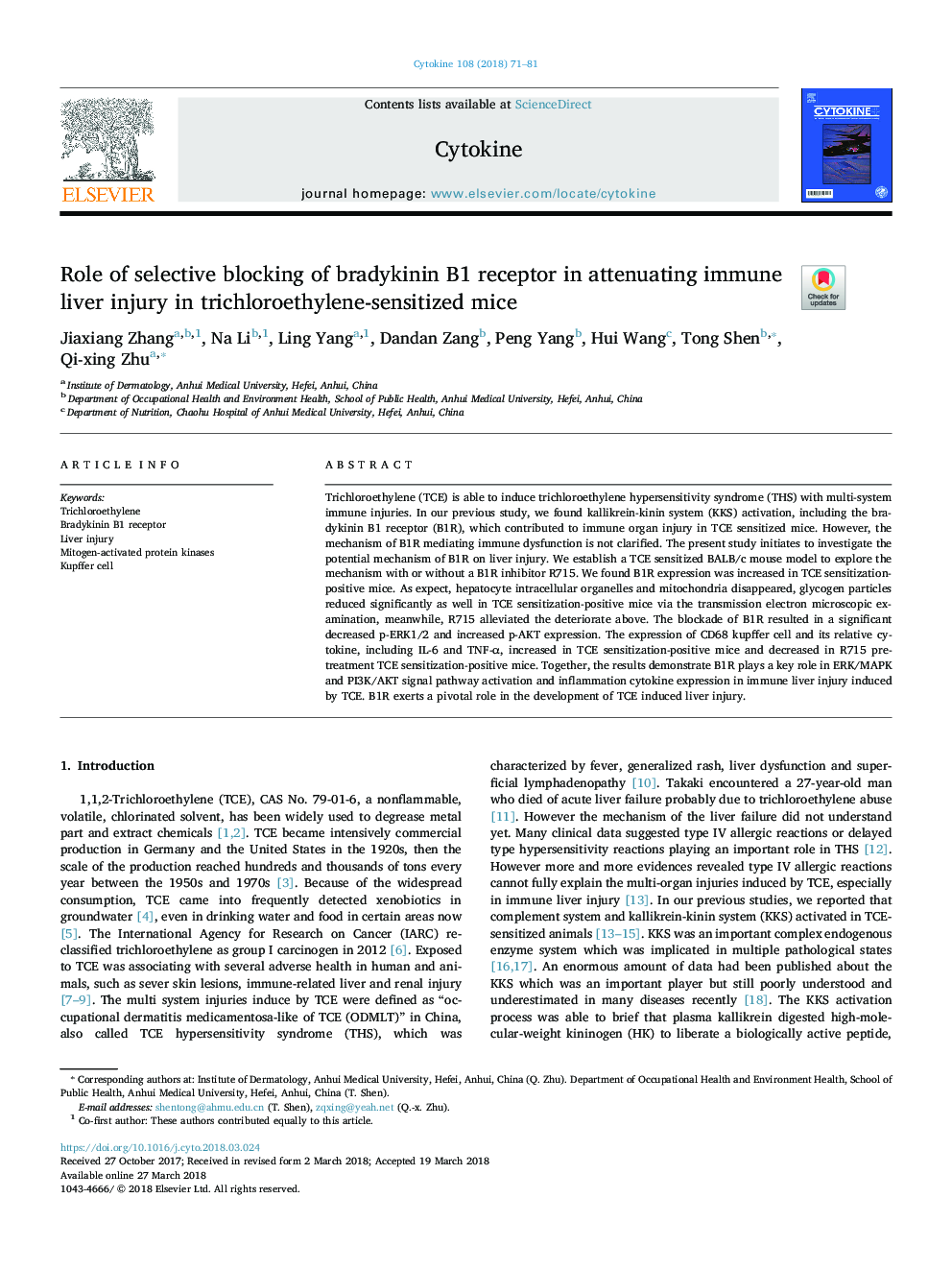| Article ID | Journal | Published Year | Pages | File Type |
|---|---|---|---|---|
| 8628798 | Cytokine | 2018 | 11 Pages |
Abstract
Trichloroethylene (TCE) is able to induce trichloroethylene hypersensitivity syndrome (THS) with multi-system immune injuries. In our previous study, we found kallikrein-kinin system (KKS) activation, including the bradykinin B1 receptor (B1R), which contributed to immune organ injury in TCE sensitized mice. However, the mechanism of B1R mediating immune dysfunction is not clarified. The present study initiates to investigate the potential mechanism of B1R on liver injury. We establish a TCE sensitized BALB/c mouse model to explore the mechanism with or without a B1R inhibitor R715. We found B1R expression was increased in TCE sensitization-positive mice. As expect, hepatocyte intracellular organelles and mitochondria disappeared, glycogen particles reduced significantly as well in TCE sensitization-positive mice via the transmission electron microscopic examination, meanwhile, R715 alleviated the deteriorate above. The blockade of B1R resulted in a significant decreased p-ERK1/2 and increased p-AKT expression. The expression of CD68 kupffer cell and its relative cytokine, including IL-6 and TNF-α, increased in TCE sensitization-positive mice and decreased in R715 pretreatment TCE sensitization-positive mice. Together, the results demonstrate B1R plays a key role in ERK/MAPK and PI3K/AKT signal pathway activation and inflammation cytokine expression in immune liver injury induced by TCE. B1R exerts a pivotal role in the development of TCE induced liver injury.
Keywords
Related Topics
Life Sciences
Biochemistry, Genetics and Molecular Biology
Endocrinology
Authors
Jiaxiang Zhang, Na Li, Ling Yang, Dandan Zang, Peng Yang, Hui Wang, Tong Shen, Qi-xing Zhu,
